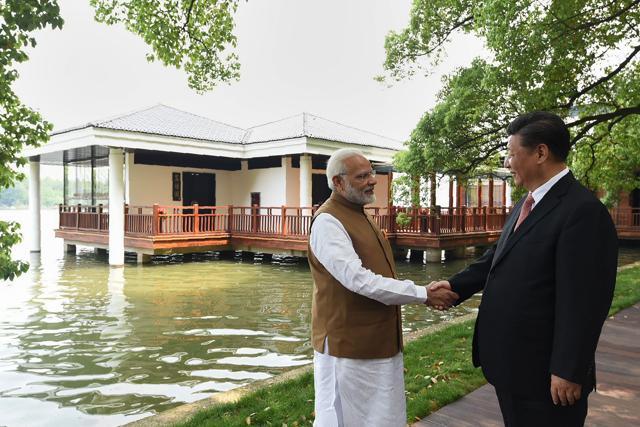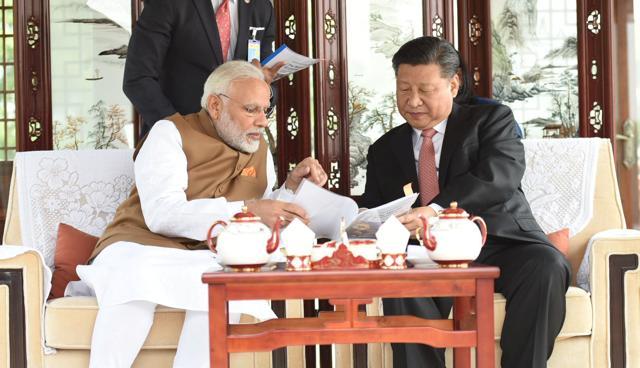Why informal talks between India and China need to continue
The informal summit was fraught with some political risks. But the happy outcome to the meeting shows why it was a necessity and why the practice should be continued.
Optics are certainly not everything in diplomacy. But they do play a part in international relations. The just concluded informal summit between Indian Prime Minister Narendra Modi and Chinese President Xi Jinping in Wuhan, and even the first visit by Xi to India in 2014, were not short on optics. They showcased the personal chemistry shared by the two leaders.

Xi, the strongest Chinese leader in many years, has gone out of Beijing only twice to receive a visiting dignitary in his five years as president -- once to his home province Xi’an in 2015 and now to Wuhan. On both occasions, it was to host Modi. On his part, Modi accorded a public reception to Xi in his home state, Gujarat, in 2014 -- something Indian leaders had been wary of doing, smarting under the 1962 military debacle.
With their lakeside walk, boat ride together and effusive praise for each other, Modi and Xi have yet again demonstrated the personal chemistry they have established.

The informal summit was fraught with some political risks. But the happy outcome to the meeting shows why it was a necessity and why the practice should be continued.
The two countries could no longer have clung to the mechanisms of the past to take bilateral ties to the next level. Last year’s military standoff in Doklam, at the India-Bhutan-Tibet tri-junction,served as a wake-up call. The way Doklam played out tested one of the foundational pacts of the modern-day India-China relationship: the 1993 Border Peace and Tranquillity Agreement (BPTA). The BPTA by and large ensured two countries contained their disputes. It was a leap of faith both sides took to sign the pact in the early 1990s. Border incidents which could have spun out of control in 1986-87 in Sumdorong Chu in Arunanchal Pradesh forced two sides to work on the pact that was eventually signed early in the next decade.
India and China are both expanding their footprint in their region. This often leads to inevitable friction between two large and populous countries growing simultaneously and seeking to assert themselves.Bilateral engagement between the two sides needed strategic guidance that required the two leaders go into a huddle to share their visions on issues -- bilateral, regional as well as global. The huddle was also needed for a reiteration of their positions on how to go about addressing the longstanding border dispute and how to manage their differences on the issue pending a final resolution.
A press release issued after the summit reiterated a key principle that went into the sealing of the 1993 pact. “The two leaders further directed their militaries to earnestly implement various confidence building measures agreed upon between the two sides, including the principle of mutual and equal security, and strengthen existing institutional arrangements and information sharing mechanisms to prevent incidents in border regions, ” said the statement.

The principle of mutual and equal security was amply stressed by the leaders in their talks. Incidentally, the concept was suggested by former Prime Minister Atal Bihari Vajpayee when he was in the opposition and it was readily accepted by the then government. The two leaders have strengthened the principle by giving “strategic guidance to their respective militaries to strengthen communication in order to build trust and mutual understanding and enhance predictability and effectiveness in the management of border affairs.”
A conversation of this sort doesn’t ensure that all the issues that exist between two countries are resolved in the near future. However, it was necessary to look at a new framework of engagement, factoring in the domestic and foreign policy priorities of the two countries. It was all the more necessary at a time when the international order is going through major realignment and US President Donald Trump is shaking up the known certainties of multilateralism.
India and China need a new template to chart their course ahead. And there is no better alternative to their leaders meeting in an informal summit, unburdened by the expectations of a pre-negotiated outcome, in going about the task.






